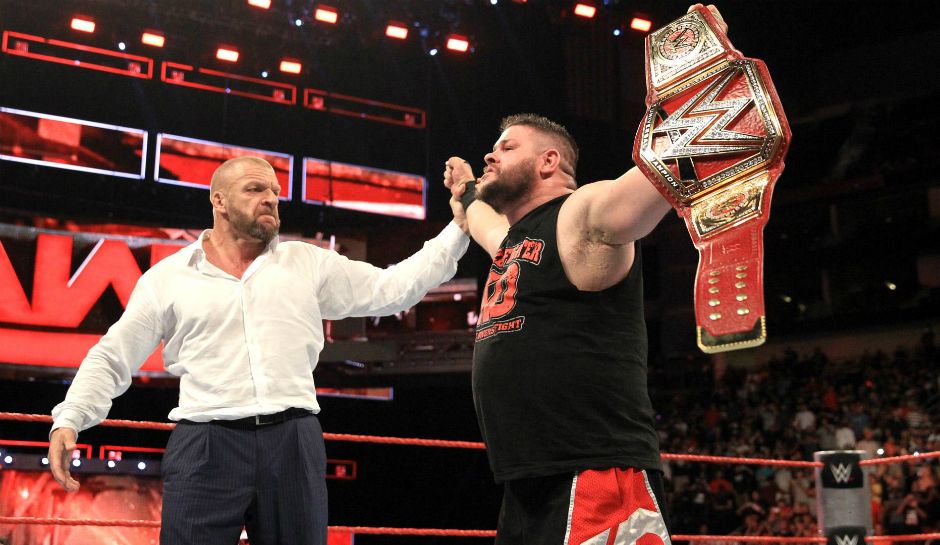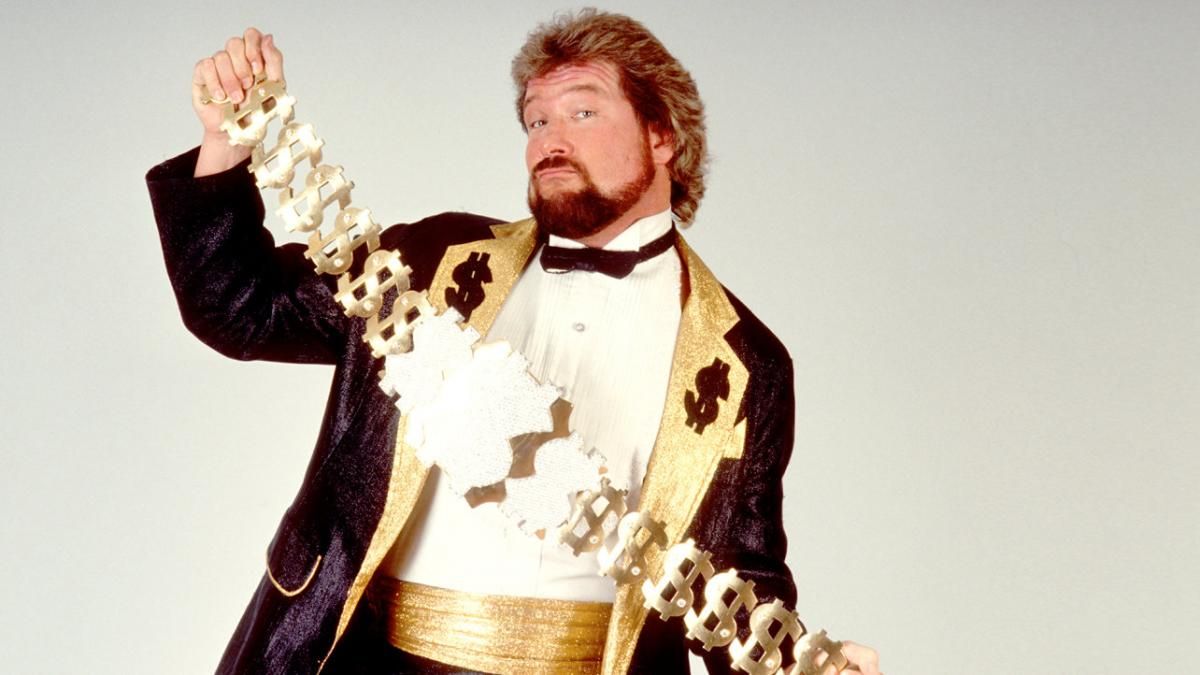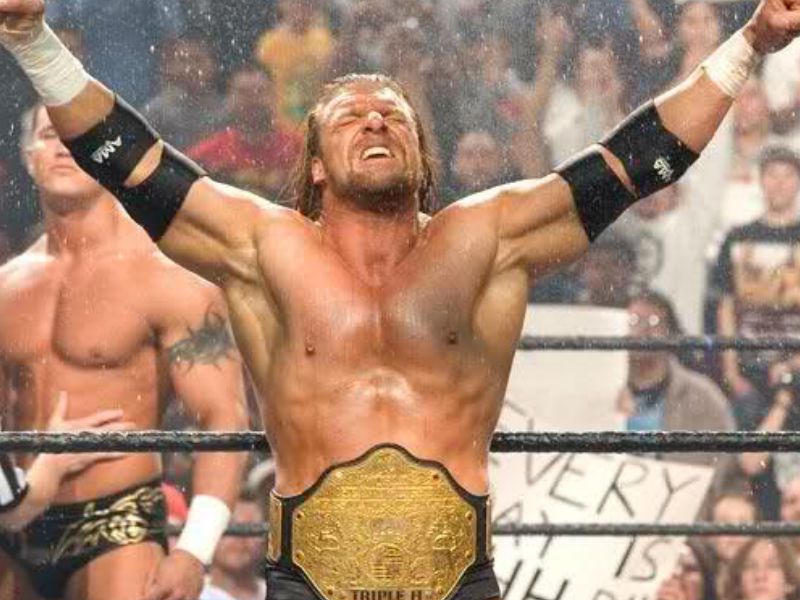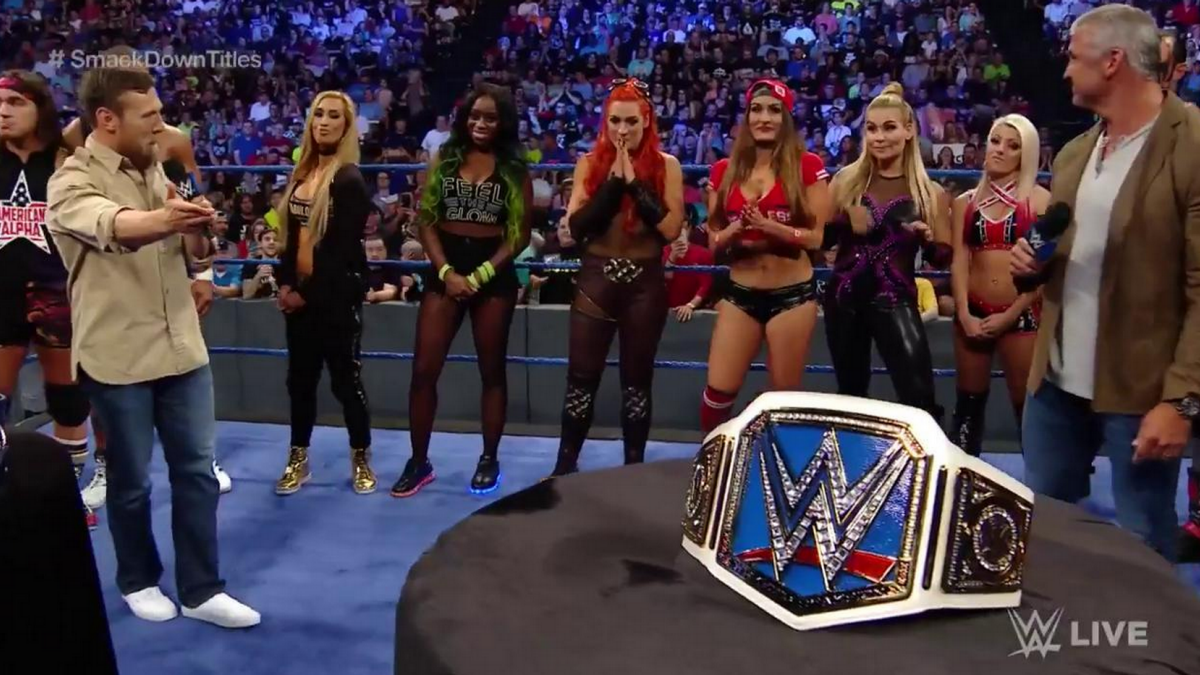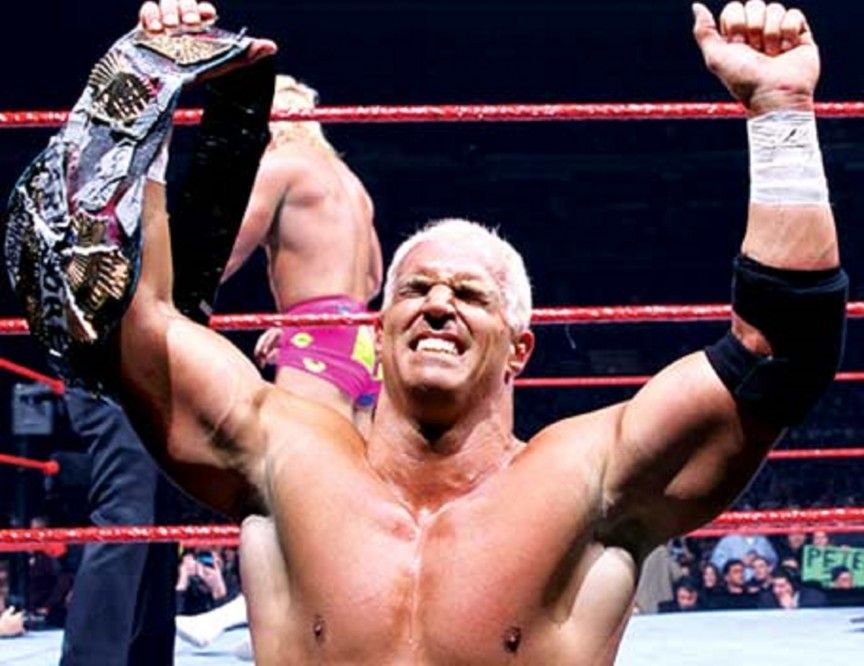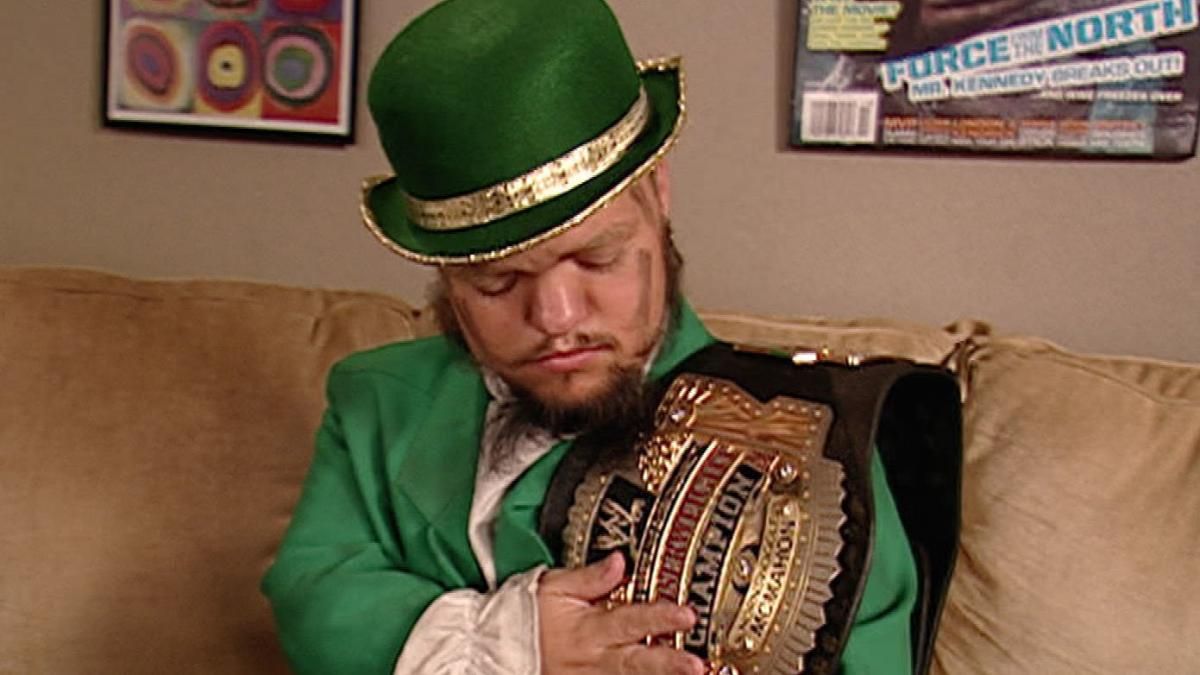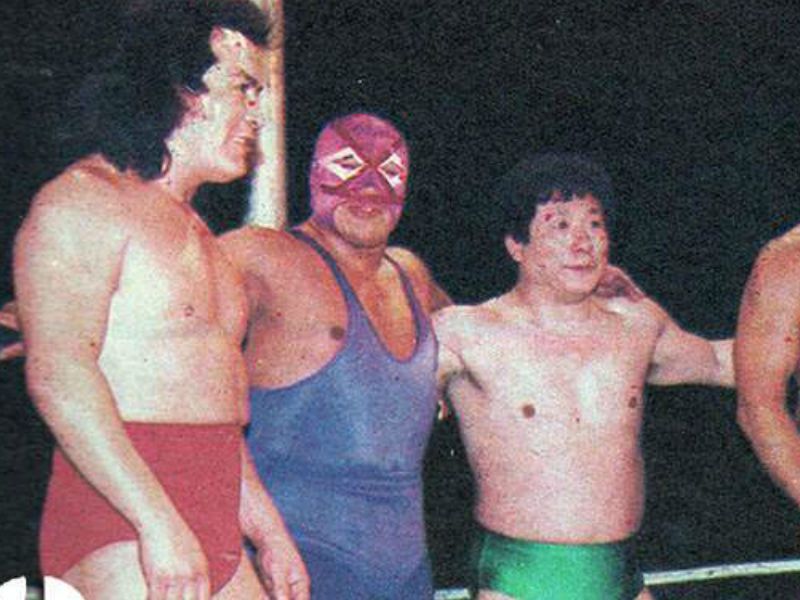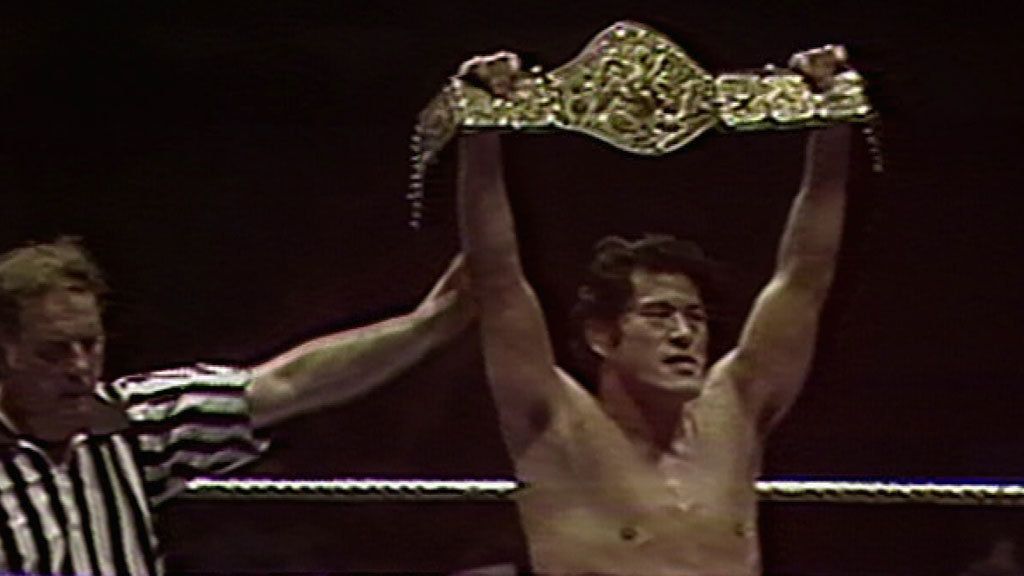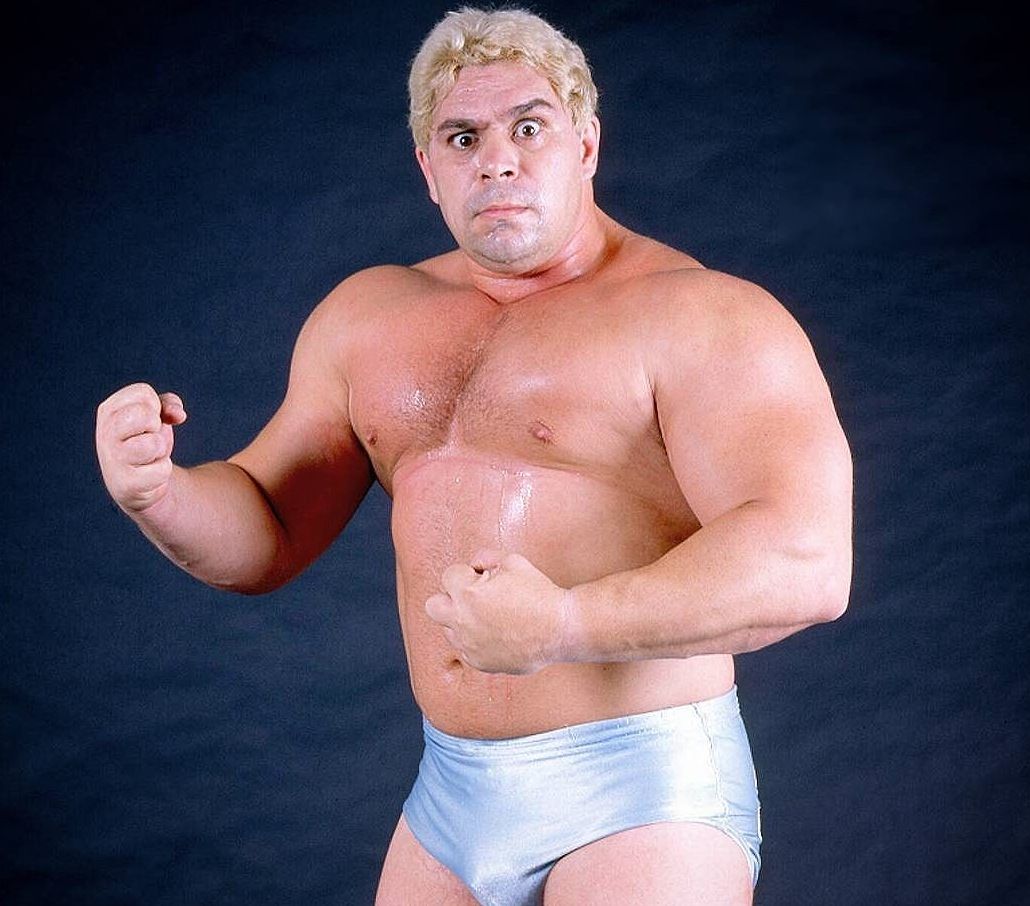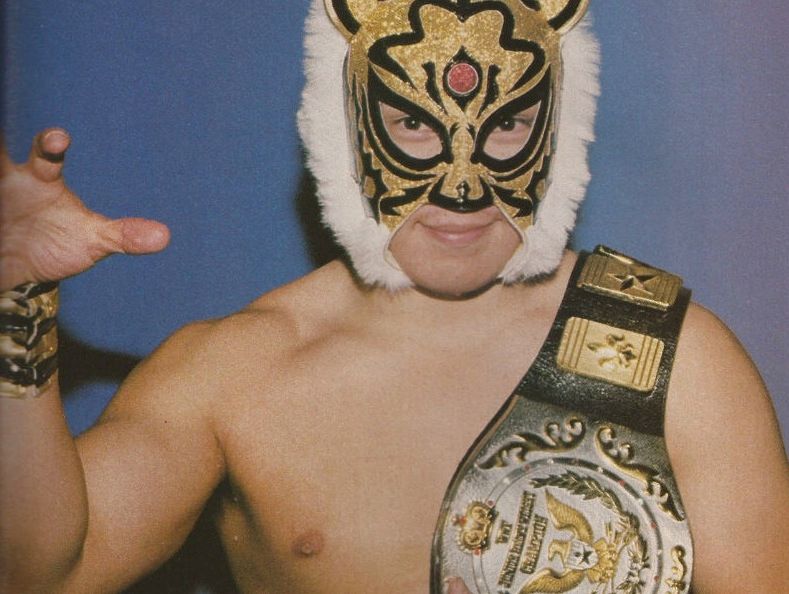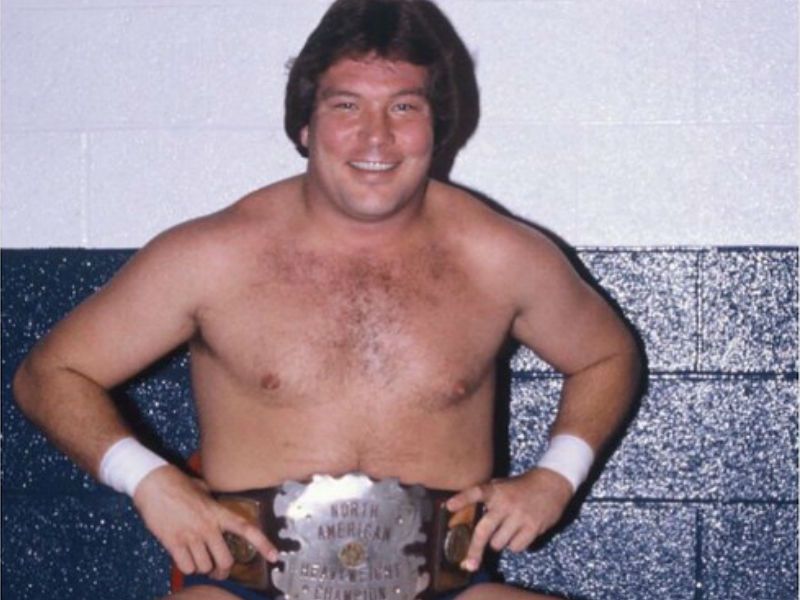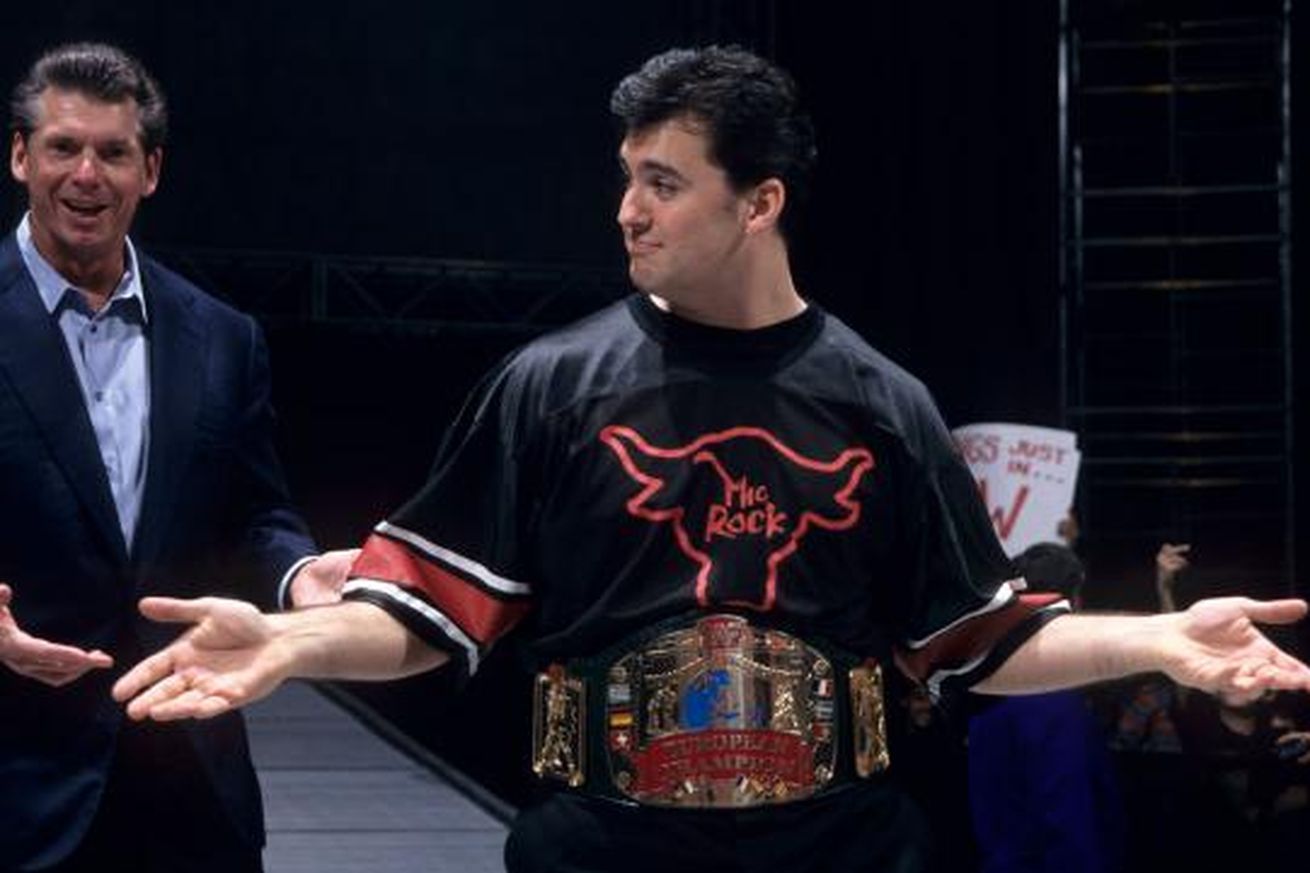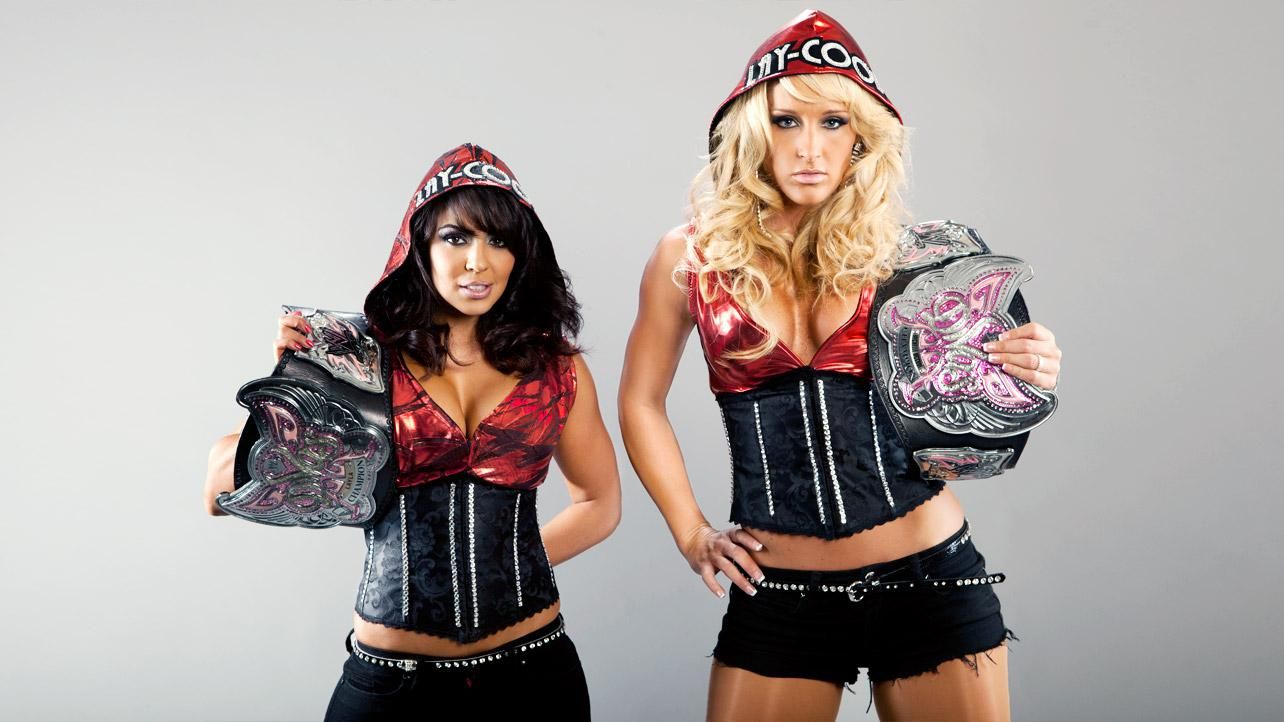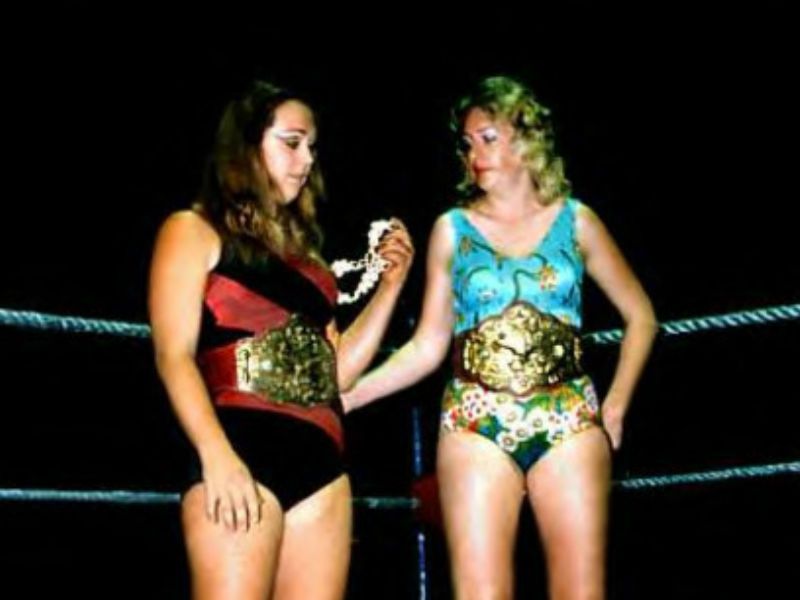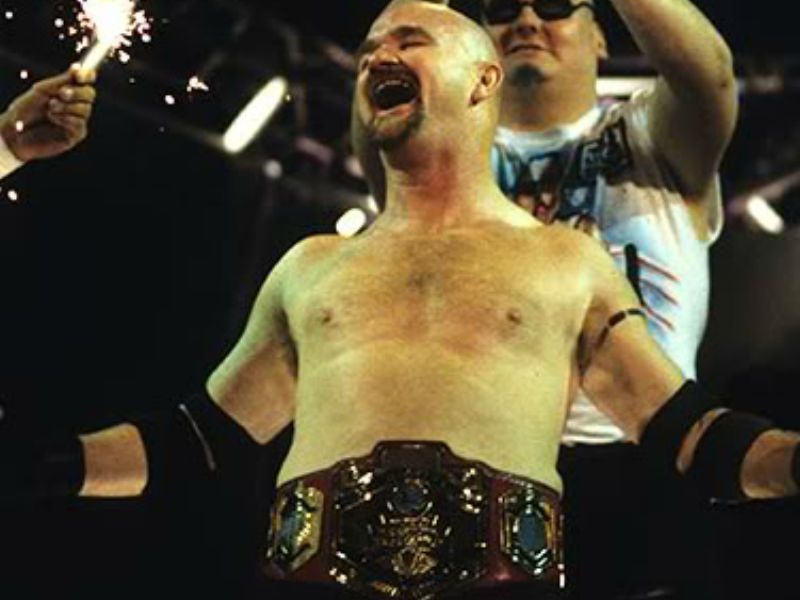Let’s face it: not every prize is created equally. In the same sense the person bringing home the “participant” ribbon isn’t on the same level as whoever nabbed the gold, there have likewise been certain WWE championships that weren’t quite as prestigious as those that stood the test of time. Occasionally, time alone was the problem: it can be hard for a championship to seem in any way important if the company stops mentioning it almost instantly after introducing it, which believe it or not has happened more than once. Of course, time only begins to scratch the surface as to why wrestlers should have actively avoided these particular accolades, not to mention that sometimes the ones that stuck around the longest were the most embarrassing of all.
The thing about wrestling is that at any given moment, these championships had the chance to become important based on the wrestler who held them. Indeed, some of them remain etched in WWE history to an extent fans are dying for them to return, but we’re here to take off those rose-tinted glasses and view these titles for what they were. The reality is, the more prizes there are in general, the less every prize out there means, so if WWE wasn’t ready to base months of storylines around a belt, it begs the question why they bothered making it in the first place. Keep reading to learn which 15 championships WWE never should have created.
15 15. The Million Dollar Championship
In stark contrast to what was implied in the intro (and what several other titles on this list will prove), the problem with the Million Dollar Championship was that too many people held it. To be more specific, the problem is that more than two people had the chance to win it. When it was originally introduced, The Million Dollar Championship was Ted DiBiase’s consolation present to himself when he couldn’t capture the WWE World Championship, which remains one of the most inspired heel moves in wrestling history. For that same reason, however, it made no sense at all that DiBiase would actually defend the belt in sanctioned WWE matches only a few years after it was created. The length of time that passed between it being created and put on the line didn’t help, either, as by that point fans were accustomed to viewing the belt as a prop and not a real reward. Despite an undeniable degree of triumph in the moment Virgil won it, the fact Virgil lost it back to DiBiase negated that moment entirely. The revivals of the belt by Steve Austin and Ted DiBiase, Jr. were even worse.
14 14. The World Heavyweight Championship
The biggest problem with WWE and their many championships is the fact half of them represent the same niche, and the trend of multiple titles for the same division reached its eternal nadir when Eric Bischoff awarded Triple H with the World Heavyweight Championship. The WHC was initially created so Raw would have a top prize when Brock Lesnar made the WWE Championship exclusive to SmackDown in late 2002. From the minute it was introduced, the WHC was considered second rate and unimportant, making whatever brand was saddled with it seem similarly irrelevant compared to the other. The championship history represents this status, as there were points when the belt was passed around on an almost monthly basis, plus an unfortunate streak of undeserving winners like Jack Swagger and The Great Khali. It would have made far more sense to continue the roaming WWE Champion angle and since we’re on the subject…
13 13. The SmackDown Women's And Tag Team Championships
As bad as the World Heavyweight Championship’s creation was, there were at least enough superstars ready to compete for it that the belt nonetheless became a big deal within months of being introduced. In addition to contributing to WWE’s title glut, the SmackDown Women’s and Tag Team Championships both share the perhaps even more important problem that there aren’t quite enough people to even compete for the belts in the first place. In order to create the Women’s Championship, WWE needed to introduce the entire female roster of SmackDown at once in a highly panned segment. The Tag Team belts don’t fare much better, as the tournament to crown champions required two tossed together teams and one bizarre comeback most fans still can’t explain. Identical to the first roster split, the problem could have been solved with roaming top champions of each division and yet WWE for some reason would rather dilute their importance, instead.
12 12. The Hardcore Championship
Knowing what we know today, there is nothing less responsible than a wrestling promoter sending their talent to the ring in order to hit each other on the head with steel chairs. While there was more to the Hardcore Championship than just chair shots, the mere name alone should imply a certain disregard for employee safety that the division strongly glorified during its brief four year existence. Credit where credit’s due, the first year and a half or so of the Hardcore Championship was unique and creative. Once the dreaded 24/7 rule was introduced, however, it almost instantly turned into a complete farce of what a championship is supposed to be. The joke was pretty funny at the very beginning, but the longer it went on, the less funny it got and, once it was changing hands dozens of times per week, fans were having too much trouble keeping up to care in the slightest. It didn’t help that as the title started getting defended more, the matches started getting more ridiculous and eventually even WWE had to admit the joke was over.
11 11. The (Original) Cruiserweight Championship
Out of all the championships on the list, we blame WWE the least for creating the Cruiserweight Championship or, more accurately, continuing to use it after they purchased WCW. WWE’s own Light Heavyweight Championship was somewhat of a mockery and we’ll get to that later, while the WCW Cruiserweight Championship had a long and impressive lineage that went a long way in making WCW the success it was. WWE even treated the belt moderately respectfully during the first two years they had it, at which point they started using it as a prop to make Chavo Guerrero look like an idiot as he lost to Jacqueline and his own father. Of course, Chavo’s lackluster reign was only the beginning of the end and it was Hornswoggle who completely destroyed the Cruiserweight Championship by improbably winning it in 2007. Frankly, that Hornswoggle victory was all we needed to decide WWE never should have bothered taking this belt from WCW.
10 10. The Intercontinental Tag Team Championships
The history of the Intercontinental Tag Team Championships has been so poorly reported that even WWE.com refers to them as the most mysterious belts the company ever produced. The main reason is that the titles were never defended in America, having been created through a partnership with the Japanese promotion Universal Wrestling Federation. They were created in early 1991 and awarded to Gran Hamada and Perro Aguayo, two wrestlers better known for feuding with one another than teaming. It isn’t a good sign when two random wrestlers are awarded tag belts and true to form, they were retired later that year when WWE and UWF stopped doing business. Records are shaky as to whether or not Aguayo and Hamada ever defended the championships at all, although a mere handful of defenses would hardly be enough to save these belts from obscurity.
9 9. The World Martial Arts Heavyweight Championship
Revealing just how far back the trend of baselessly awarding championships to random wrestlers goes, Vince McMahon, Sr. created the World Martial Arts Heavyweight Championship in 1978 as a gift to Antonio Inoki upon his agreeing to work for WWE. The belt was also an early example of how wrestling and MMA never mix, as it was defended not in regular wrestling matches but in special contests meant to resemble “real fights,” the mere concept of which trivialized the dozens of wrestling matches that surrounded any championship defenses. While on the subject, it would also be relevant to bring up the fact the belt was rarely defended, with Inoki reigning as champion for over 10 years, well after he stopped making regular WWE appearances. Eventually, Inoki took the belt with him to NJPW, where only one other superstar would go on to win a championship reign.
8 8. The Canadian Championship
WWE probably assumed that creating a Canadian Championship would make them feel more global, in the same sense as the later European Championship. The flaw in this thinking is that Canada is significantly smaller than Europe and Canada was already included in the North American Championship that had been abandoned due to irrelevance only a few years prior to the Canadian Championship being introduced. The real reason WWE created the Canadian Championship was that they had recently purchased Lutte Internationale, a French-Canadian promotion where Dino Bravo was reigning as World Champion. WWE awarded Bravo the Canadian Championship upon his 1985 re-debut in WWE and he held on to it for the better part of five months before walking out of the company, at which point they finally realized what a mistake they had made in introducing the belt in the first place.
7 7. The Junior Heavyweight Championship
The Cruiserweight Classic be damned, WWE’s history of disrespecting their smaller competitors has been well documented for decades. The first championship delegated to a lower weight class was the Junior Heavyweight Championship, created in 1965 and first held by Paul DeGalles. Very little is known about the first several years of the title, aside from the fact it was abandoned in 1972 and not mentioned again until 1978, at which point it was revived so Tatsumi Fujinami could bring the belt to New Japan Pro Wrestling. The title actually has a fairly respectable history, with great champions like Tiger Mask and The Dynamite Kid, although the fact remains it was pretty strange of WWE to create a belt solely to hand off to another promotion. Predictably, the championship was once again abandoned once NJPW and WWE stopped doing business.
6 6. The North American Heavyweight Championship
Out of all the championships on this list, the North American Heavyweight Championship was the one belt with potential to have become something huge. The issue then became hindsight, which gives fans the benefit of knowing it would only be a few short months after WWE created the North American Heavyweight Championship that they also introduced the Intercontinental Championship, which fans now know would be the one to take precedence and survive the test of time. The North American Heavyweight Championship was also fairly nondescript while it existed, suffering the commonplace on this list mistake of having been introduced by way of an unmerited awarding, in this case to Ted DiBiase. DiBiase lost the belt to Pat Patterson in a manner of months and Patterson went on to introduce the Intercontinental Championship while reigning as North American Championship already. Patterson reigned concurrently with both championships for a short while, only for the NAC to quickly get phased out once he lost it to Seiji Sakaguchi.
5 5. The European Championship
This entry may arise some controversy and the truth is that there were indeed quite a few great European Champions during the five short years the title existed. The European Championship went on veritable roller coaster of respectability from day one, when it was confusingly introduced basically as a prop for The British Bulldog. Bulldog was a great wrestler and won the championship in a great match, but didn’t defend the belt very often, nor did the second champion, Shawn Michaels. Triple H was the third champion, winning the belt in a precursor to The Fingerpoke of Doom, thereby setting the standard for the title as it continued dropping in importance until it finally blinked out of existence. Once in a blue moon, a great champion like Kurt Angle or Eddie Guerrero would elevate the title back to prominence for a few weeks or even months, only for total duds like Mideon and Test to take their turn with it as well and drag it back to the bottom.
4 4. The Divas Championship
The problems with the Divas Championship go far deeper than the simple issue that the original Women’s Championship still existed, creating the typical title glut that keeps popping up on this list. There is also the fact the belt itself was bright pink and glittery, making the women competing for it seem frilly and fanciful, undercutting whatever talents they may have had in the ring. This problem had been emblematic of WWE ever since they introduced the word “Diva” to represent their female talent, with many fans feeling the word was inherently pejorative and far from the empowering moniker WWE intended for it to be. Worse than the mere negative reaction WWE faced upon creating the Divas Championship was the fact they ignored their critics and instead made the Divas Championship the only belt for women, unifying it with the original Women’s Championship and then pretending the latter never existed.
3 3. The Women's Tag Team Championships
In theory, there’s nothing wrong with the Women’s Tag Team Championships and there may well be a place for them in modern day WWE. However, the Women’s Tag Team Championships don’t exist as of the time this article is being written, rather they very occasionally popped up during the 1980s. The titles were inherited from the NWA, with Velvet McIntyre and Princess Victoria serving as the first champions. Victoria retired due to injury after a year and a half with the belts and Desiree Peterson replaced her. The telling part of this fact is that McIntyre and Victoria couldn’t lose the belts when Victoria was injured, mainly because there weren’t any women for them to lose them to. At the end of the decade, a feud between The Glamour Girls and the Jumping Bomb Angels over the belts would actually serve as one of the most innovative in WWE at the time, although the women’s tag team division still remained unable to grow more than four women deep. The belts were later abandoned due to a pay dispute involving The Glamour Girls and The Fabulous Moolah.
2 2. The Light Heavyweight Championship
Of the many attempts WWE made at fighting back against WCW, the Light Heavyweight Championship was probably the most insulting. The WCW cruiserweight division was one of the many innovations WCW brought to American wrestling and it made sense that WWE would try and copy them by creating a similar division for smaller superstars of their own. Unfortunately, the talent base WWE had to draw from wasn’t as vast as that of WCW and the WWE light heavyweight division seemed second rate in comparison. The first two champions, Taka Michinoku and Christian, were at least talented enough to prevent the title from looking like a complete joke, but then WWE decided to throw away any credibility the belt ever could have had by giving it to Gillberg for 453 days. Although Gillberg may have been a pretty great joke at the time, his reign completely destroyed the Light Heavyweight Championship and any subsequent reigns felt like meaningless placeholders because of it.
1 1. The Universal Championship
The problem that has propped up the most on this list has been an overabundance of championships that represent the same thing and none are guiltier of this problem than the Universal Championship. The issue with the Universal Championship is identical to the aforementioned World Heavyweight Championship, with the only difference that the WHC at least had a unique look that attached it to wrestling history in a meaningful way. The Universal Championship is simply a redder version of the WWE Championship and yet WWE immediately began treating the two on the same level as if fans wouldn’t notice. Fans did notice, though, and as was the case in 2002 and with the SmackDown Women’s and Tag Team Championships, the Universal Championship merely clouds things and makes the WWE Championship less important.

